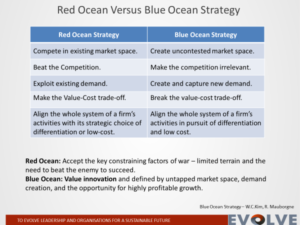It’s very important for all of us to step into every day with a note of optimism and hope. When we are filled with positive energy, we better engage and bring our full selves into all that we do. Successful organisations are made up of highly engaged staff, hence there is clearly a role for organisational leaders to invigorate people with hope.
So how can you step into the future and help your organisation to “light up” and be better equipped to create its own successful future? It is important to consider that according to the Gallup Consortium’s 2017 workplace report, only 8% of all staff in the UK are fully engaged. These numbers are far worse than the world average, but also show that we have a huge opportunity to create workplaces that get more people onboard and perform much better.
According to Gallup’s statistics, three things enable engaged people: feeling respected, a sense of personal development and positive relationships. These three areas have everything to do with the organisations culture, the style of leadership used, the way strategy is created and executed, performance management and people development to name a few.
1. Strategy
Consider that strategy consists of long-term positioning and short-term actions, and that the right execution is core to any successful strategy. Generally, higher-level managers of organisations should be responsible for the longer-term goals and these should cascade down to every level and staff member and to each action taken day to day. The general rule is that if you want someone to own their work and fully engage, then include them in some way in the determination of the strategy that they must execute. Methods that can greatly assist, is to create an organisational purpose, along with a vision and values. A purpose is of a higher order than a vision and should clearly and emotively spell out why the business exists. This purpose should then be cascaded down to every division, department and function. Look at the following article and videos for further details:
a) Building an Organization that is Fit to Execute Strategy: https://evolveconsult.uk/strategy/building-an-organisation-that-is-fit-to-execution/
b) Start with Why, Simon Sinek: https://youtu.be/IPYeCltXpxw
c) Southwest Airlines, Our Purpose and Vision: https://youtu.be/eGxMf88I5g4
2. Style of Leadership and Culture
I like to think of culture as the road to success. Without a road, you cannot drive anywhere. Organisational culture simply put is “the way we do things around here”. Many things influence the culture: present and past leadership, the places staff come from, positive and negative organisational events, process and practices, the competitive landscape and many more. Think about the positive and negative ways people behave within your organisation. Do you experience the same behaviours regularly, write them down? This is your culture, and one must ask if this culture will help your organisation to thrive in the long-term or not? One of the roles of senior leadership is to help define, set and ensure that the organisation has the desired culture.
In the hierarchical and authority centric world, that almost lies behind us, management would mostly use a parent-child style of leadership. They would then wonder why staff are disengaged and do not take accountability (acting like children). This world demands an adult-adult style of leadership, which means interacting with all staff equally as adults irrespective of their level. As per Gallup’s survey quoted above, people must be treated in a way that makes them feel respected, this is as adults, not children.
3. Cascaded Goals
Once a business has decided on its critical success factors through its strategic process, it ideally then defines its strategic objectives. The objectives are worded as an end state such as “grow revenue by 10% in market 1 and 2” or “reduce operational costs by 10% in real terms”. Both these strategic objectives will require a plan of actions (a strategy) to achieve these end states. In both cases, these plans would cascade to every department and every person in some way. This link is key. Motivation levels will be high, if each person has bought into the Purpose, Vision and Strategy and has a clear view of how their work relates to the bigger picture. People are motivated by meaning, achievement and purpose. See the following article for more strategy insights:
Building an Organisation that is Fit to Execute Strategy, Paul de Beer:
https://evolveconsult.uk/strategy/building-an-organisation-that-is-fit-to-execution/
4. Performance Management
The entire field of performance management is still disputed in many areas. What is understood is that people work for meaning and want fairness and transparency. One of the key failures of performance management in many organisations is that it is not consistent and fair. Ratings are often biased to ensure most people fall into the centre of the bell curve, and therefore achieve an average performance rating. (to ensure average increases and bonuses where linked to performance)
The ideal performance management system should be linked to the individual and team cascaded goals as described above, as well as link to the desired cultural behavioural drivers. There should be clear differentiation between good and poor performance. If the person is a people manager, then it is key to performance manage their role as a manager. Make sure to develop all your managers on how to conduct meaningful performance conversations.
5. Customer Centricity
Customer centricity as the name implies, means putting the customers’ needs in the centre of all you do. This requires an organisation to be good at the transactional drivers (technology, processes, product, quality, efficiency etc.) as well as the transformational drivers (long-term thinking, EQ, engagement, listening, staff development etc.). The prerequisite for your staff to powerfully engage with your customers is for them to be fully engaged within your organisation. Ideally in the long run, all organisations should develop their cultures to fully support customer centricity.
Here is a short article with a few additional perspectives: LEADERSHIP WISDOMS FROM EXPERIENCED CEO’S: https://evolveconsult.uk/leadership/leadership-wisdoms-from-experienced-ceos/
